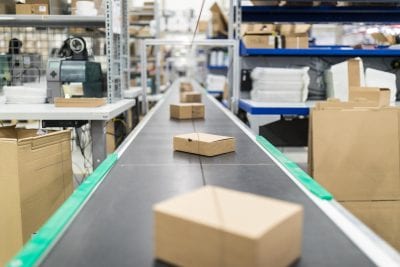The holiday season is upon us, and retailers must be prepared to avoid seasonal challenges. One major obstacle facing retailers: the rising number of e-commerce returns.
Return rates have amplified as the percentage of internet sales continues to develop. The shift to e-commerce sales, especially during the holidays, prompts impulse buying and a greater chance of the customer’s later regret, which results in higher return rates. The predicted rate of returns of total retail sales for the 2015 holiday season is 8.1%. Establishing an effective reverse logistics process allows retailers to minimize processing costs and increase the recovery value of returned goods.
Supply chain managers will face more complexity during the holiday season, Pitney Bowes 2015 Holiday Shipping Survey shows. The majority of shoppers prefer to return purchases in a nearby store, while 38% of shoppers choose to return a package through a shipping provider. Only 20% of shoppers like to have a carrier pick up a package from their home.
In order to keep up with competition, companies must offer a few return options and analyze sales in order to successfully condense returns.
1) Recalled or overstocked products that weren’t purchased and must be removed from the stores. This usually happens when a retailer has an agreement with a manufacturer, where a manufacturer takes back all unsold inventory above a negotiated amount.
2) Customer return volume can be predictable, forecasted by sales volume. Although the return rates for products bought online is much higher than for goods sold in physical stores, most returned online goods can be returned to stock.
The main challenge is controlling reverse logistics processes with multiple return channels and remote facilities. The retailer should think about acquiring additional labor and space, enhancing communication with partners and adjusting shipping processes:
- A company may need additional warehouse space to keep up with high flow of returned goods during the seasonal rush. This mean renting storage trailers and/or using space in the nearby warehouses.
- In order to ensure quick product flow during peak times, when return volume can be three times greater than usual, a company should hire additional staff.
- Retailers need proper management of processing and shipping. There should be a balance between the free space needed for shipping high-value inventory and the amount of excessive inventory leftover.
- Retailers will benefit from establishing internal lines of communication with all key partners. Ensuring data visibility will make reverse logistics management easier and allow all parties involved operate in cost- and time-efficient manner.

The earlier retailers start preparing for transportation during the holiday season, the better. Well-designed return processes will improve customer experience and satisfaction. With the right reverse supply chain strategy, a retailer can benefit from returned inventory by processing it quickly and returning it in stock or into alternative channels.
Read more:
4 Keys to Improving Your Omni-Channel Strategy
Top 4 Consumer Shipping Expectations


